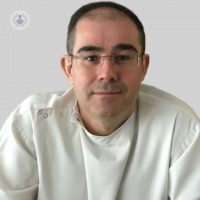Allergies cause nasal polyps?
Written by:
What are nasal polyps?
Nasal polyps are growths that grow inside the nose, as if they were "pears" hanging from the nasal mucosa of the ethmoid area. They are completely benign lesions and inflammatory origin. They can affect anyone, being very rare to appear in children under 10 years and having a higher incidence in patients who already suffer from other allergic diseases (allergic rhinitis, asthma, etc.). Overall, it is estimated that affect 2-5% of the population. The size can have highly variable and will produce symptoms depend on the size and exact location inside the nose.
Usually, it is a disease that affects both sides of the nose, not having to be a symmetrical involvement on both sides. Polyps may be multiple or be a single solitary polyp. They are a recurrent disease, which means that once cured or controlled, may appear again.
 What are its causes?
What are its causes?
The fundamental cause is an allergic basis. There may be other influencing factors, such as genetic predisposition or environmental pollution, but its incidence is higher in people with other allergic conditions such as bronchial asthma and allergic rhinitis. nasal polyps are also manifest in patients with chronic sinusitis in which there is an allergic component, being in these cases secondary to infection.
What symptoms can present?
In addition to the known symptoms of allergies (sneezing, nasal itching and runny continuous mucus), their symptoms are nasal obstruction, resulting in: having to breathe through the mouth (dry and sore throat) , disturbances of smell (referred to by patients as "no smell and the food did not taste like anything"), headaches and sinusitis predisposition to repeat. It is very common for patients to refer to "have the nose full of mucus and can not be sound". Keep in mind that not all polyps produce no symptoms: patients affected can find polyposis not report symptoms and, conversely, a single polyp can be very symptomatic.
What is your treatment? What results offer?
Treatment should be aimed to improve nasal breathing and ventilation of the sinuses, which then carries a lower risk of sinusitis and a better quality of life. Once controlled these two aspects, it is essential persistence of treatment to prevent recurrence.
Input, the best are corticosteroids applied directly into the nose, with a high level of control is achieved. Corticosteroids pills or injections have very good control of the disease in crises and as initial therapy, but its side effects can not be maintained as continuous treatment if you can avoid. Corticosteroids applied directly to a spray into the nose have virtually no side effects in the rest of the body.
If symptoms persist passed to surgical treatment which undoubtedly is the best, but being the most aggressive, never is commonly used input. It is essential also treat concomitant diseases as already discussed (allergic rhinitis or asthma) to achieve good control. If the polyps produce crisis sinusitis, antibiotic treatment is mandatory to add that not only control theIt prevents infection but also worsening polyposis.
Can I prevent in any way? Is there any characteristic that predisposes its appearance?
As an allergy - related disease, the best way to prevent its onset is good allergy control. It's the same with any disease accompanying nasal polyposis (asthma, cystic fibrosis). Inspection other pathologies is essential for monitoring polyp. If we get to operate to remove them, it is essential persistence of treatment and thus try to prevent recurrence.
Edited by Roser Berner Ubasos.


